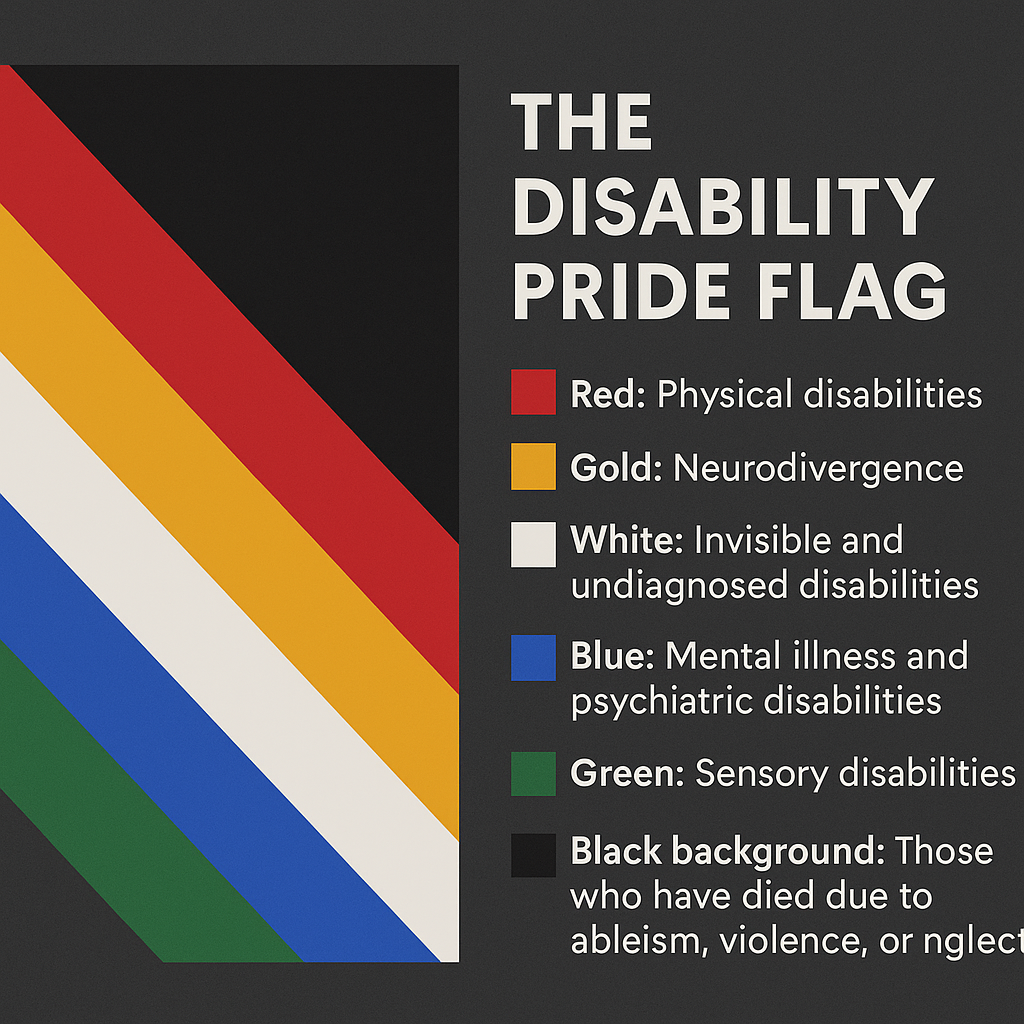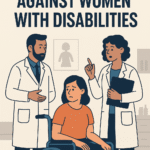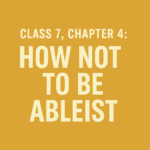Every July, we celebrate Disability Pride Month to commemorate the strength, beauty, and diversity of people with disabilities. We’ve a flag that stands for who we are, what we’ve been through, and where we’re headed, just like other Pride movements.
But do you understand exactly what the Disability Pride Flag entails?
It’s more than a sign. It’s a strong reminder that people with disabilities belong, thrive, and lead, not despite their constraints, but with them.
Let’s examine the meaning, history, and heart of this bright symbol of pride for people with disabilities.
Why Do We Need a Flag for Disability Pride
Flags are a way to show who you are. The Disability Pride Flag is a strong statement of presence and resistance, just like the LGBTQ+ rainbow flag or the Black Power fist.
People with disabilities were concealed, stigmatized, or neglected for a long time. Society, the media, schools, and jobs made us invisible. This flag states, “We are here, we are proud, and we will not be forgotten.”
The Original Flag: Made with Love and Purpose
Ann Magill, a disabled activist and artist, made the first iteration of the Disability Pride Flag in 2019. She wanted to make a symbol that spoke for the “different experiences and struggles” of persons with disabilities.
This is what the first design looked like:
- A black background to remember people who have died because of ableism, violence, neglect, or not being able to get to things.
- A brilliant zigzag lightning bolt that stands for the innovation, vitality, and diversity in the community. There was a meaning behind each color:
- Red: Physical disabilities * Gold: Neurodiversity * White: Disabilities that are not visible or diagnosed * Blue: Psychiatric disabilities * Green: Sensory disabilities (like blindness or deafness). The old flag had an issue, but it was somewhat important: accessibility. Some people, especially those with visual processing or neurological sensitivities, found the zigzag pattern and bright colors to be stressful on their senses. Ann paid attention. And she redesigned it based on what the community said.
The New Flag: Accessibility at the Center
The newly designed Disability Pride Flag came out in 2021. It still had the same strong message, but it became easier for everyone to understand and use.
This is what it looks like now:
- Black background: Still respects those who died because of ableism and the fight for disability rights. * Five straight diagonal stripes, each in a different color that has meaning:
- 🟥 Red: Physical disabilities * 🟨 Gold: Neurodivergence (like autism, ADHD, dyslexia) * ⬜ White: Disabilities that are not visible or diagnosed * 🟦 Blue: Mental illness and psychiatric disabilities * 🟩 Green: Sensory disabilities These stripes are straight and a little muted in color, which makes them easier on the eyes while yet preserving the meaning. The diagonal arrangement stands for movement and change because the handicap community is “always evolving, always pushing forward.”
❤️ Why This Flag Is Important
The Disability Pride Flag is more than just a logo. It stands for resistance, love, and being seen. It says to the world:
“We are real. We are important. We are proud.
People often think of disability as something that needs to be “fixed” or “pitied.” This flag declares, “We are whole, just as we are.”
It gives people comfort, a sense of community, and a sense of connection. This flag is for you, whether you are disabled, neurodivergent, chronically ill, or something else.
Let It Fly: Final Thoughts
Take the time to think about the flag, its story, and the people who made it during Disability Pride Month.
🟦 Post the flag on social media. 🟥 Put it on your email signature or website. You can use it in schools, offices, and homes. Talk about what each stripe means to you.
Because pride gives you power, and power allows you to move forward.
And it’s just the beginning.



